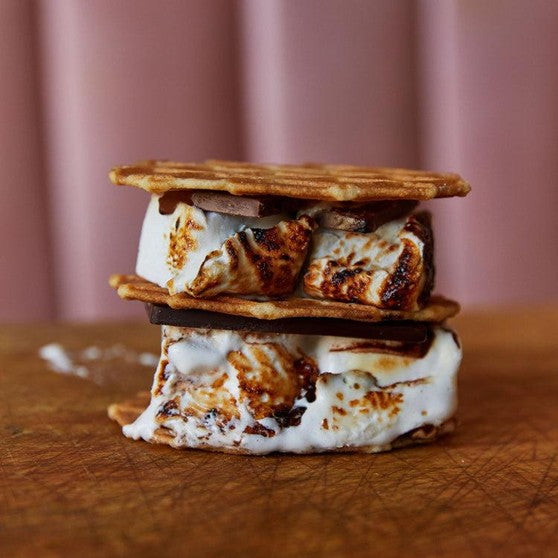Day 8: Peanut Butter Mendiant
Crispy peanut butter blended with 45% cacao deep milk chocolate and a sprinkle of Baja gold salt.
Our desire to create a set of mendiants began one holiday season, years ago. But after debating on various parfums and box designs, we added these decadent discs to our Soirée Smash Slabs instead. With such a large format, people were overjoyed! But the desire to share these bite-size beautiful delights on their own remained. As the 2023 Advent season began to roll in, we realized precisely where these dainties should end up.
But what makes a mendiant a mendiant anyway? A "mendiant" is a classic French confection studded with history and cultural significance. At its core, a mendiant is a chocolate disc adorned with nuts and dried fruits typically produced around Christmastime. But the origins of the mendiant date further back than you may think.
The symbolism behind this confection begins with the four mendicant monastic orders of the Middle Ages in Christian Europe. A mendicant, or someone who practices mendicancy, relies exclusively on what is "needed to survive." The mendicants of this time owned little property or physical belongings and often took a "vow of poverty," devoting all their time to their respective faith and serving society.
The relatively simple-to-make mendiant became representative of these monastic orders and incorporated different fruits and nuts based on the four orders:
- Raisins for the Dominicans
- Hazelnuts for the Augustinians
- Dried figs for the Franciscans
- Almonds for the Carmelites
These ingredients were chosen to represent the colors of the monastic robes of each order and are still honored to this day. Of course, modern takes on the treat include various types of chocolate, from white to dark, as well as candied fruit peels, various spices, and seeds.
Regardless of topping, the mendiant endures across Europe, particularly in France, and is often made at home but is also a standard offering in chocolate shops and patisseries—a token of the monastic traditions and humble origins of Europe's most beloved foods.
But what makes a mendiant a mendiant anyway? A "mendiant" is a classic French confection studded with history and cultural significance. At its core, a mendiant is a chocolate disc adorned with nuts and dried fruits typically produced around Christmastime. But the origins of the mendiant date further back than you may think.
The symbolism behind this confection begins with the four mendicant monastic orders of the Middle Ages in Christian Europe. A mendicant, or someone who practices mendicancy, relies exclusively on what is "needed to survive." The mendicants of this time owned little property or physical belongings and often took a "vow of poverty," devoting all their time to their respective faith and serving society.
The relatively simple-to-make mendiant became representative of these monastic orders and incorporated different fruits and nuts based on the four orders:
- Raisins for the Dominicans
- Hazelnuts for the Augustinians
- Dried figs for the Franciscans
- Almonds for the Carmelites
These ingredients were chosen to represent the colors of the monastic robes of each order and are still honored to this day. Of course, modern takes on the treat include various types of chocolate, from white to dark, as well as candied fruit peels, various spices, and seeds.
Regardless of topping, the mendiant endures across Europe, particularly in France, and is often made at home but is also a standard offering in chocolate shops and patisseries—a token of the monastic traditions and humble origins of Europe's most beloved foods.


